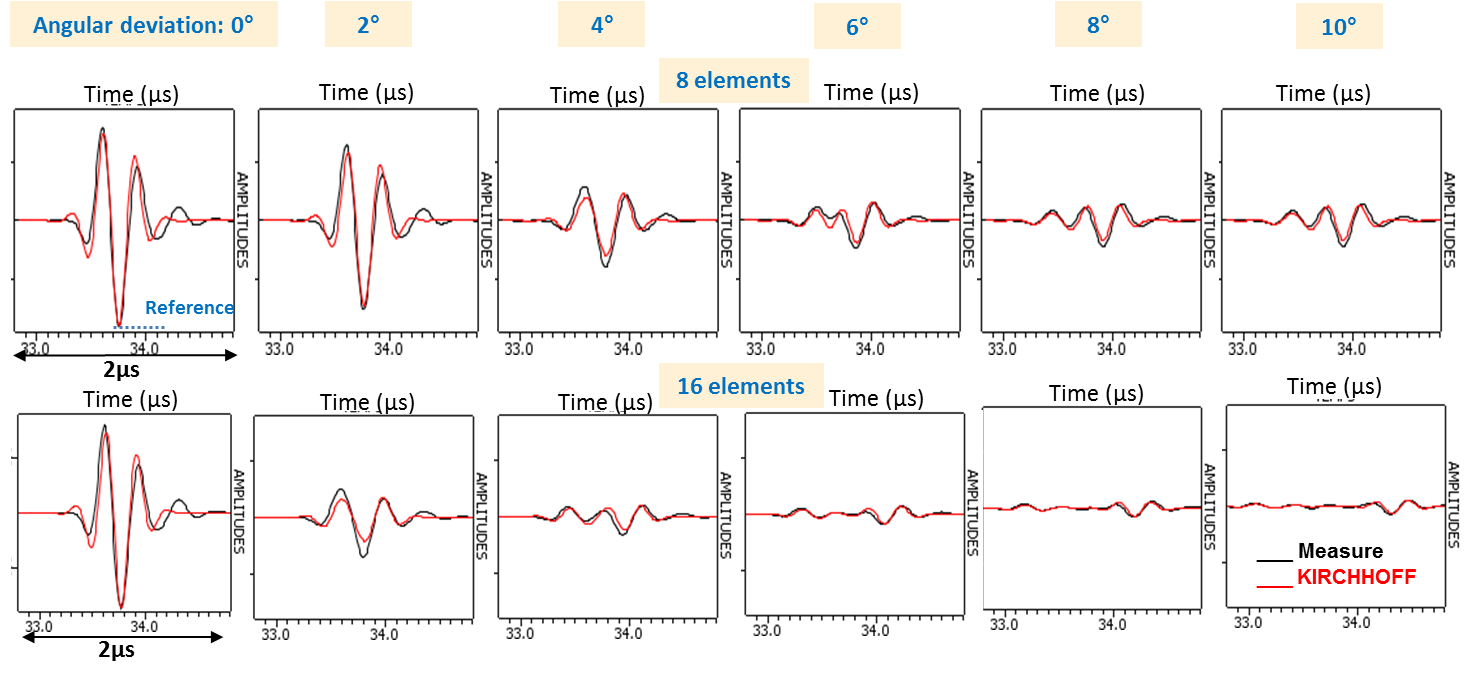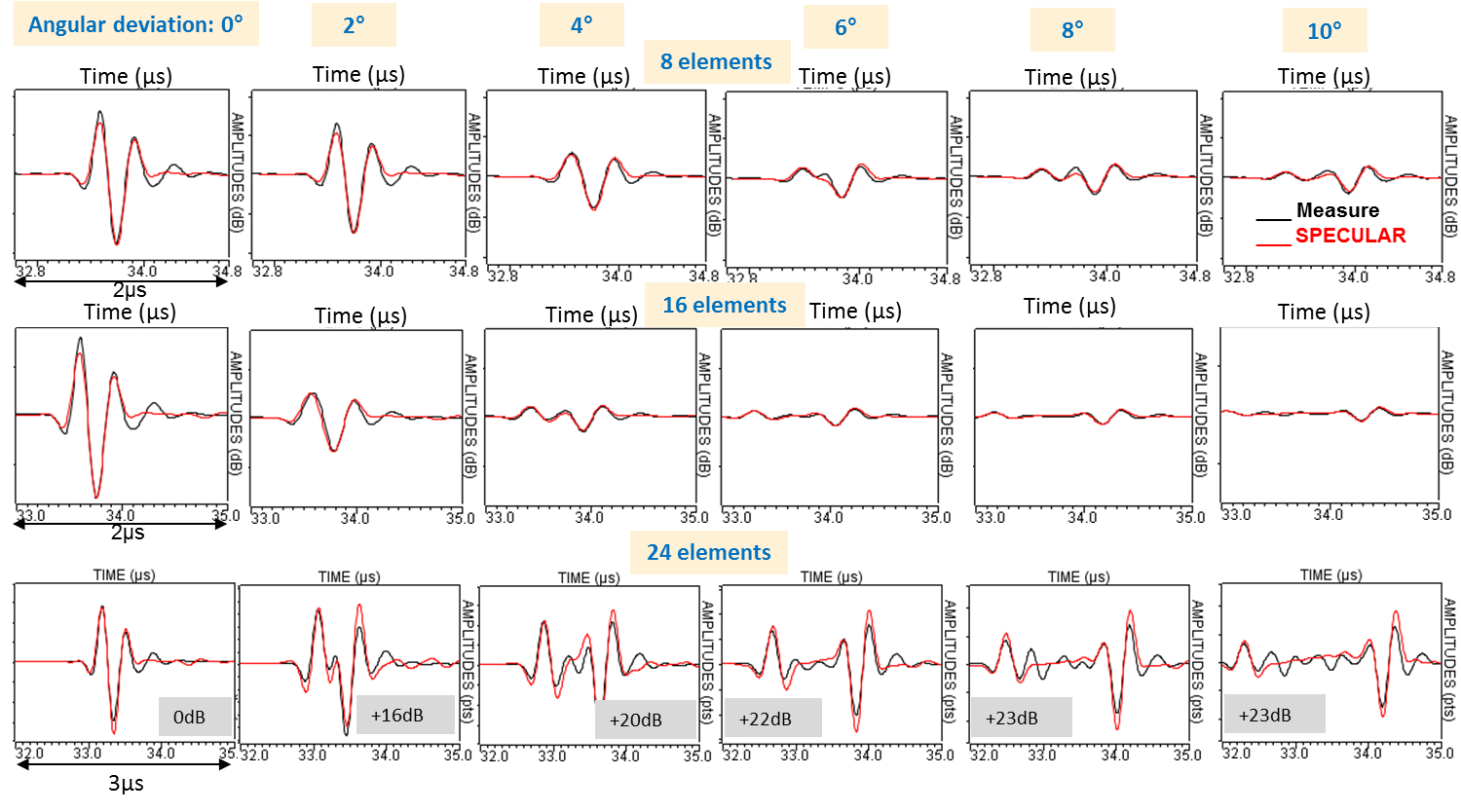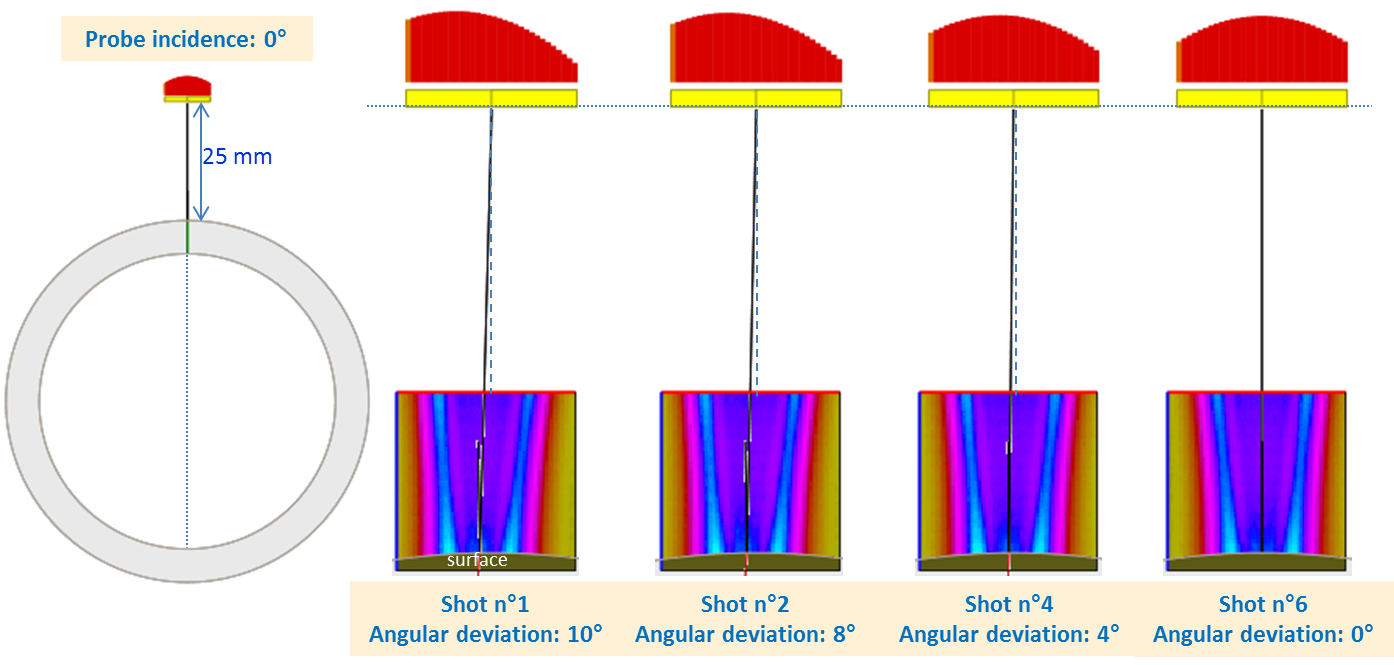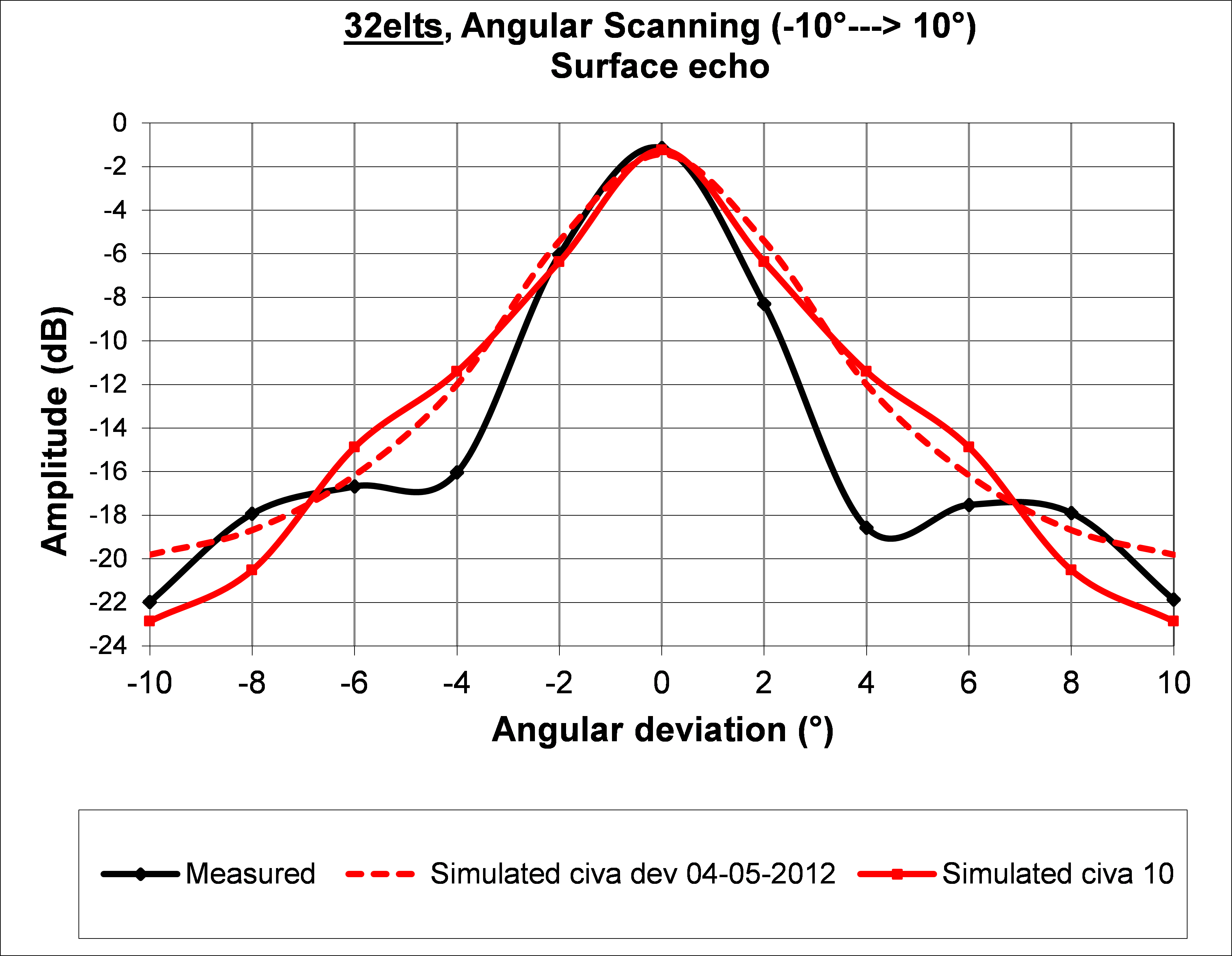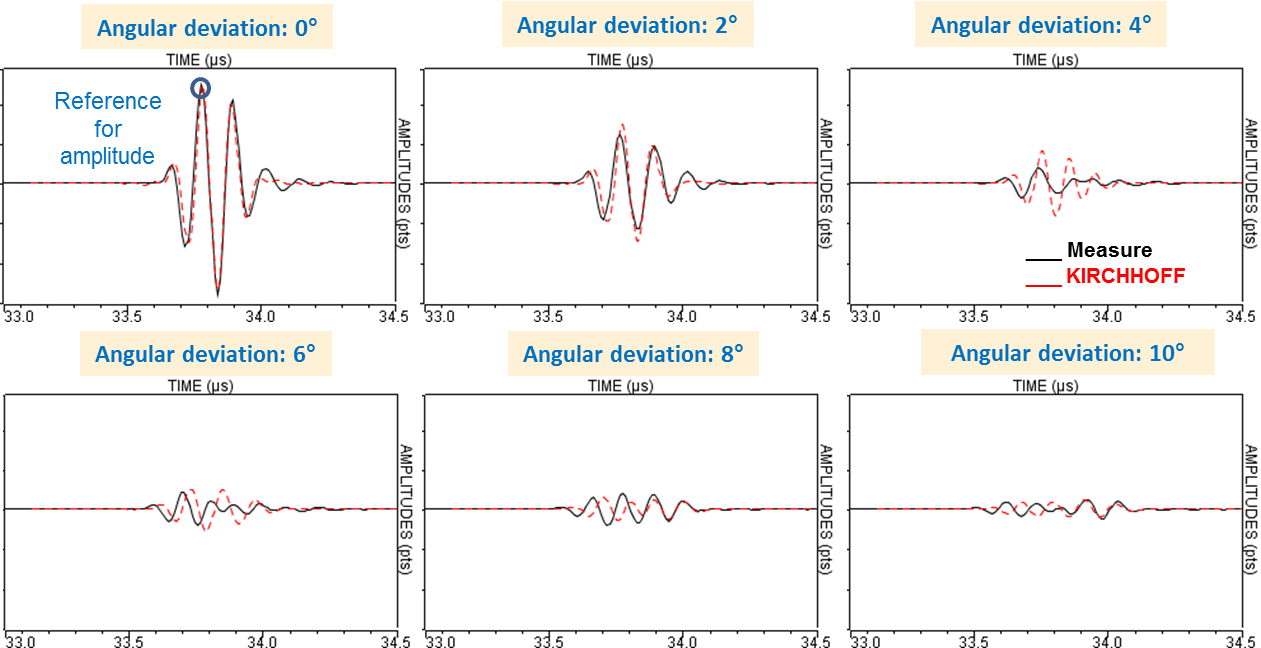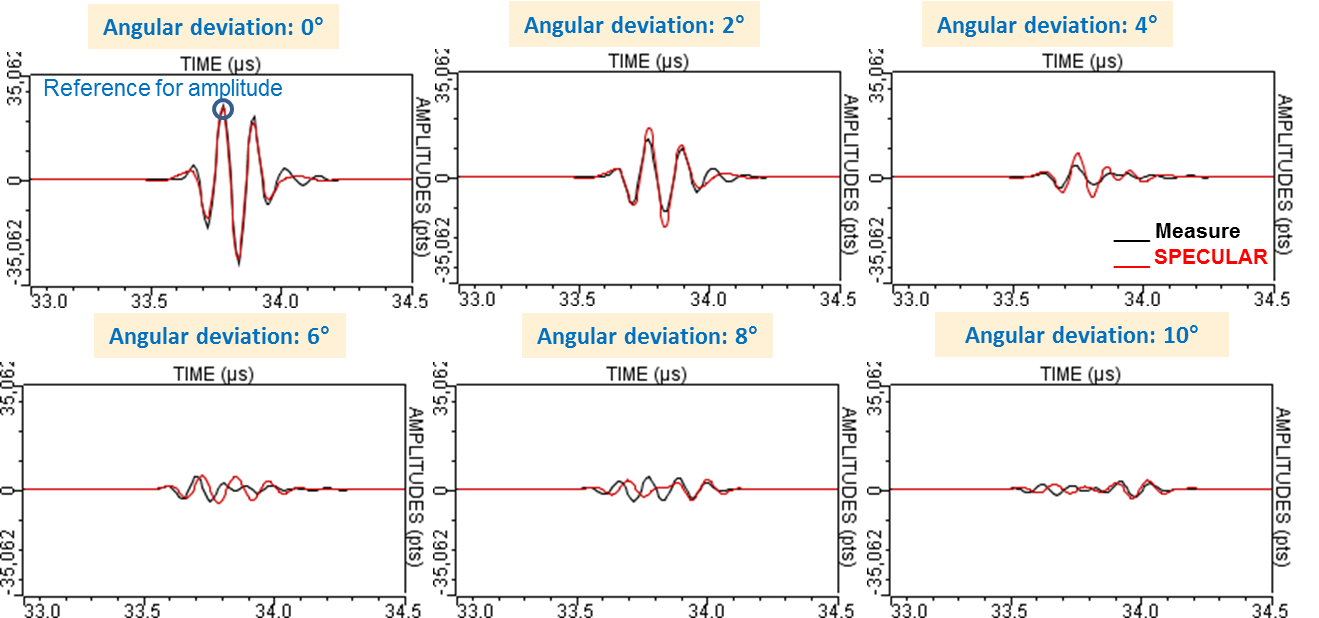This study involves two linear phased-array probes in immersion and two different specimens, a rectangular block and a tube. The signal characteristics are reported in the table below.
| Ø Crystal (mm) | Mode | Frequency (MHz) | Bandwith (%) | Phase (°) |
|---|---|---|---|---|
| Linear (64 elts) | L,-10° to 10° | 3 | 90 | 310 |
| Linear (32 elts) | L,-10° to 10° | 10 | 55 | 290 |
Linear array, 64 elements, 3 MHz, -10° to 10°
| Ø Crystal (mm) | Mode | Frequency (MHz) | Bandwith (%) | Phase (°) |
|---|---|---|---|---|
| Linear (64 elts) | L,-10° to 10° | 3 | 90 | 310 |
The surface echo of a rectangular block has been measured for a water path of 25 mm, three different sequences of 8, 16 and 24 active elements as is shown on the following figure, and « beam steering » delay laws from -10° to 10°, with 2° steps.
The results are calibrated for a Ø6 mm SDH, located at 150 mm depth and a null delay law. The amplitudes of surface echoes obtained for a beam steering from -10° to 10°, for three active element sequences and a water path of 25 mm are plotted in black for the measured results, in red for Kirchhoff model results and in red dotted for specular model results.
Unlike previous studies, in this case Kirchhoff model results are closer to measurements and in very good agreement with them. The specular model overestimates from 2 dB to 4 dB the amplitudes compared to measures.
Below are shown Ascan comparisons between Kirchhoff model results and measured results and comparisons between the specular model results and measured results.
Signals predicted by both models are in good agreement with measurements.
Linear array, 32 elements, 3 MHz, -10° to 10°
| Ø Crystal (mm) | Mode | Frequency (MHz) | Bandwith (%) | Phase (°) |
|---|---|---|---|---|
| Linear (32 elts) | L,-10° to 10° | 10 | 55 | 290 |
For the first time in this study, the specimen is a tube with an external diameter of 76 mm and 7 mm width, as it can be seen on the figure here below. The surface echo has been measured for deflection laws from -10° to 10°, with steps of 2°, for a water path of 25mm and 32 active elements.
The results are calibrated from a flat surface echo and a null angular deflection. The amplitudes of surface echoes obtained for a beam steering from -10° to 10°, for three active element sequences and a water path of 25 mm are plotted in black for the measured results, in red for Kirchhoff model results and in red dotted for specular model results.
For beam steering close to 0°, both CIVA models are in very good agreement with measurements. For beam steering included between (-/+)6° and (-/+)10°, amplitudes predicted by CIVA are relatively close to measurements, with no more than 2dB difference. However, for a deflection of (-/+)4°, CIVA doesn’t reproduce the amplitude fall shown by measurements, overestimating also amplitude values with 7 dB compared to measured results.
Below are represented Ascan comparisons between Kirchhoff model results and experimental results and between specular model results and experimental results.
For both CIVA models, times of flight and temporal shape of Ascans diverge from measurements when the angular deflection increases.
Continue to Focal laws in different points, L0°
Back to surface echoes
Back to geometrical echoes



